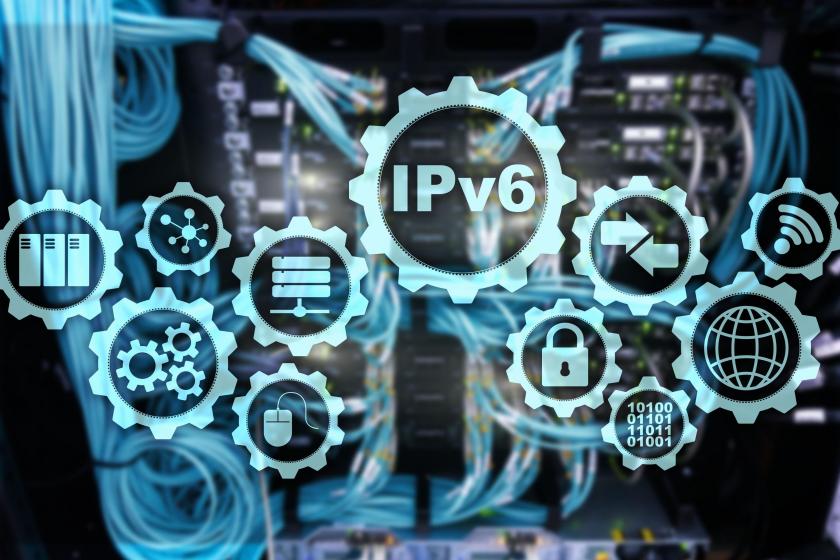IPv6 Adoption: China Steps on the Deployment PedalIPv6 Adoption: China Steps on the Deployment Pedal
A new initiative from the Central Cyberspace Administration of China and others aims for 750 million active IPv6 users by year-end and sets a 2024 cut-off date for IPv4.

It is safe to say IPv6 adoption has been much slower than anyone imagined. IPv4 addresses were depleted in 2015, yet IPv6 adoption on the end user side is still only between 30% and 40% globally, and IPv6 connectivity among those who access Google is around 40% to 45%. All of that might be about to change due to a new IPv6 initiative out of China.
What is China’s IPv6 initiative?
Recently, the Central Cyberspace Administration of China, the National Development and Reform Commission, and the Ministry of Industry and Information Technology jointly issued the "2023 Work Arrangement for Further Promoting Large-scale IPv6 Deployment and Application." One of the objectives of the three organizations with this work arrangement is to “solidly promote the in-depth development of large-scale deployment and application of IPv6.”
By the end of 2023, they hope the number of IPv6 active users will reach 750 million, the number of Internet of Things IPv6 connections will reach 300 million, the proportion of fixed network IPv6 traffic will reach 15%, and the proportion of mobile network IPv6 traffic will reach 55%.
There are several specific objectives that were laid out in the agreement that must be met by the end of the year. For example, new home wireless routers, home smart networking products, set-top boxes, and more must support IPv6 and enable IPv6 address assignment by default. Government portals at or above the county level fully support IPv6. Ninety percent of domestic major commercial websites and mobile Internet applications must support IPv6.
Building on last year’s comparable IPv6 work agreement, the goals are a bit more aggressive. And there is now a 2024 cut-off for IPv4.
What’s driving the adoption of IPv6?
Driving this IPv6 push is the desire to meet the surging demands for digital connectivity to support numerous things, including a home user's Wi-Fi setup, IoT devices, enterprise backbones, and more.
Why? The work agreement authors noted: “The carrying capacity and service quality of the network and application infrastructure with IPv6 are better than those of IPv4.” No one could argue with that logic.
Is IPv6+ mature enough for use?
However, one point has some people concerned. It relates to IPv6+, which is an enhanced version of IPv6 for 5G and cloud and other variants. For example, a version dubbed IPv6 Enhanced, long championed by Huawei, includes new capabilities or features to meet the requirements of path planning, quick service provisioning, automatic observability and monitoring, SLA assurance, application awareness, and more. It makes use of:
SRv6, which is a next-generation IP protocol that combines Segment Routing (SR) and IPv6’s forwarding technology,
Bit Index Explicit Replication IPv6 encapsulation (BIERv6), which is a new multicast technology, and
AI capabilities such as network analytics and intelligent tuning.
China’s 2022 agreement noted the work on IPv6+ “technology ecosystem is more complete, and the field of industry integration and application continues to expand.”
Others agree with that sentiment. For example, EANTC, an international testing center, believes SRv6 has a bright future and has matured enough for use. Specifically, Carsten Rossenhövel, CTO and co-founder of EANTC, the international testing center, said, “it is ready for prime time,” after the organization completed a multi-vendor SRv6 joint test, which proved the operability of SRv6 in large-scale networking environments.
However, there are several concerns with these enhanced versions of IPv6. First of all, there are splintered efforts underway. While all those involved have the same general objectives, how they get there and which technologies they use will make a difference. The industry will need to do extensive interoperability and scalability testing before embracing any enhancements.
There is also a political factor. Some of the granular control and enhanced capabilities of the technologies that will complement core IPv6 functionality could be used by a government to restrict access to certain content or control that users are allowed to communicate outside of their country.
What’s delaying widespread IPv6 adoption?
Several factors have helped extend the life and usefulness of IPv4, enough to allow many businesses to put off using IPv6.
The biggest factor prolonging the use of IPv4 is Network Address Translation (NAT), which allows an enterprise system with a private IP address to communicate with machines with public IP addresses located outside their private network. NAT accomplishes this by converting the private IP address of the systems or machines to a public IP address. Without NAT, enterprises with thousands of devices or systems that need internet connectivity would require significantly more public IPv4 addresses.
Another factor is that there are IPv4 addresses to be had. They can be costly, but there are markets to buy IPv4 addresses. There are multiple sources for the addressing being sold. Some come from providers who, when IPv4 addresses were abundant, acquired many more than they needed. Most retained these unused addresses. But now that there is a demand for them (and money can be made), some providers are making the addresses available.
With all that said, the effort by the Chinese organizations to accelerate the use of IPv6 is in line with industry expectations. Analysts predict great and sustained growth. For example, ResearchandMarkets.com expects the global IPv6 to grow at a CAGR of 30.79% to $8.24 billion by 2027.
Related articles:
About the Author
You May Also Like




